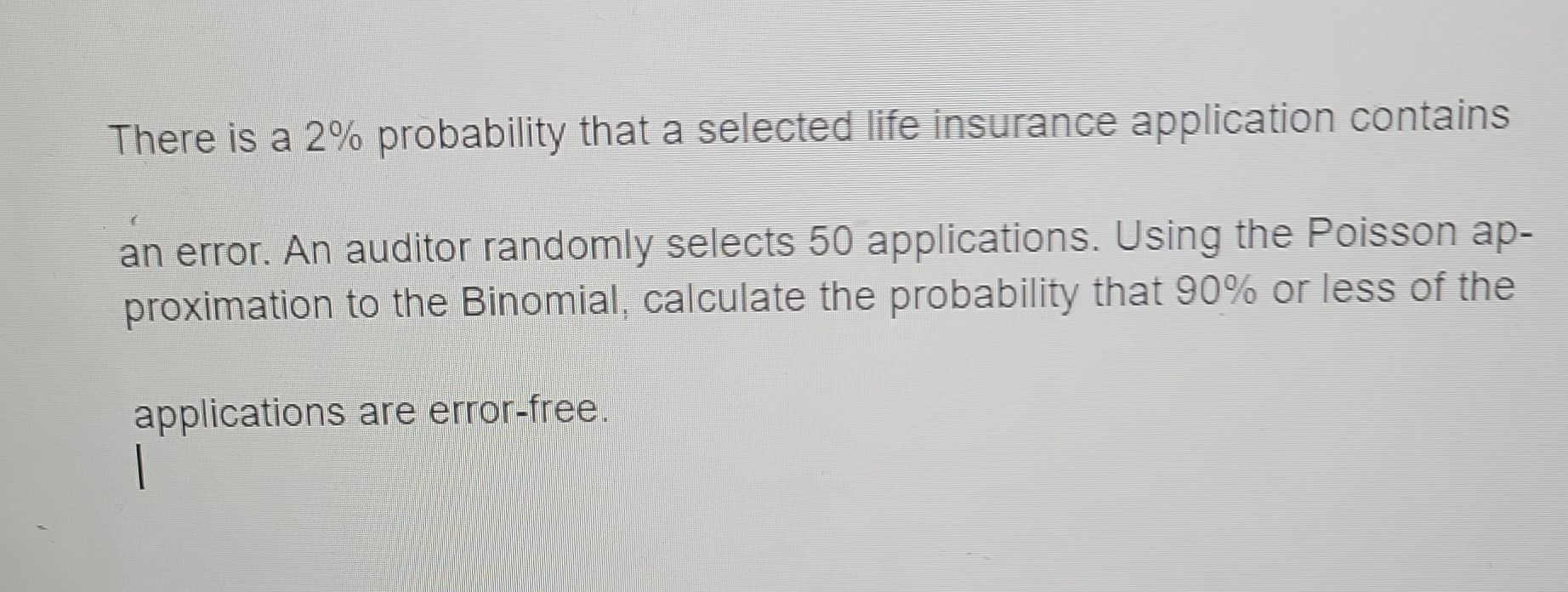AI tutor
Welcome to Bytelearn!
Let’s check out your problem:

There is a probability that a selected life insurance application contains an error. An auditor randomly selects applications. Using the Poisson approximation to the Binomial, calculate the probability that or less of the applications are error-free.
Full solution
Q. There is a probability that a selected life insurance application contains an error. An auditor randomly selects applications. Using the Poisson approximation to the Binomial, calculate the probability that or less of the applications are error-free.
- Calculate Mean Errors: First, we need to determine the mean number of errors () in applications. The mean is calculated by multiplying the probability of an error in a single application by the number of applications.
- Calculate Probability of Errors: Next, we need to calculate the probability that or less of the applications are error-free. This means that or more of the applications contain errors. Since we have applications, of is applications. Therefore, we are looking for the probability of having or more errors.
- Use Poisson Distribution: Using the Poisson distribution, the probability of having exactly errors is given by the formula:However, we need the cumulative probability of having or more errors, which is the complement of the probability of having or fewer errors. So, we will calculate the probability of having , , , , and errors and subtract the sum from .
- Calculate Probability of Errors: Calculating the probability of having errors:
- Calculate Probability of Error: Calculating the probability of having error:
- Calculate Probability of Errors: Calculating the probability of having errors:
- Calculate Probability of Errors: Calculating the probability of having errors:
- Calculate Probability of Errors: Calculating the probability of having errors:
- Calculate Cumulative Probability: Now, we sum the probabilities of having , , , , and errors to find the cumulative probability of having or fewer errors:
- Calculate Probability of or More Errors: Finally, we calculate the probability of having or more errors, which is the complement of the probability of having or fewer errors:
- Correct Probability Calculation: We can now compute the numerical value of using the value of which is approximately .:
- Correct Probability Calculation: We can now compute the numerical value of using the value of which is approximately .:However, we made a mistake in the previous step. We were supposed to find the probability that % or less of the applications are error-free, which corresponds to the probability of having or fewer errors, not or more. Therefore, we should use the value we calculated for directly.
More problems from Experimental probability
QuestionGet tutor help
QuestionGet tutor help
QuestionGet tutor help
QuestionGet tutor help
QuestionGet tutor help
QuestionGet tutor help
QuestionGet tutor help
QuestionGet tutor help
QuestionGet tutor help
